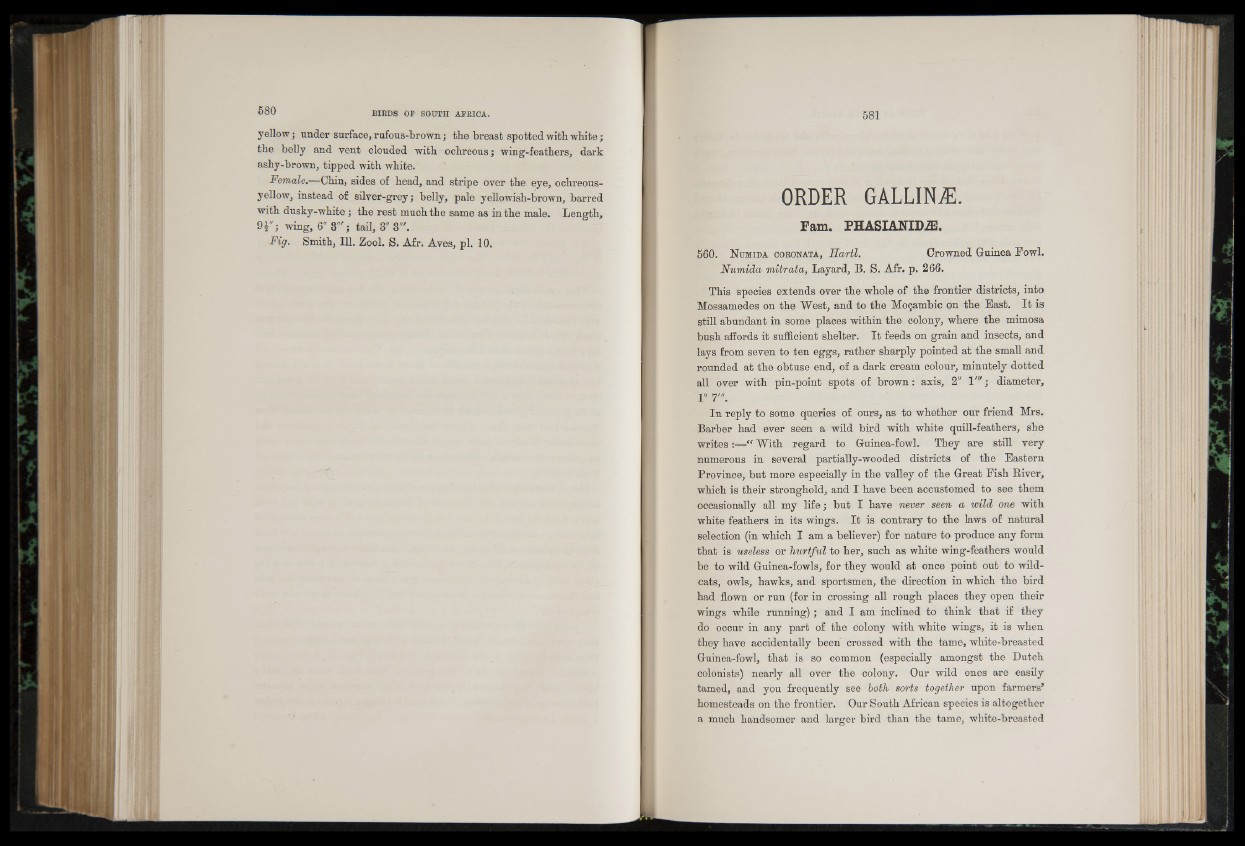
yellow; under surface, rufous-brown; the breast spotted with white;
the belly and vent clouded with ochreous; wing-feathers, dark
ashy-brown, tipped with white.
Female.—Chin, sides of head, and stripe over the eye, ochreous-
yellow, instead of silver-grey; belly, pale yellowish-brown, barred
with dusky-white; the rest much the same as in the male. Length,
9 F ; wing, 6" 3"'; tad, 3" 3'".
Fig. Smith, 111. Zool. S. Afr. Aves, pi. 10.
ORDER GALLINA.
Fam. PHASIANIDJE.
560. N u m id a c o r o n a t a , Hartl. Crowned Guinea Fowl.
Numida mitrata, Layard, B. S. Afr. p. 266.
This species extends over the whole of the frontier districts, into
Mossamedes on the West, and to the Mo(jambic on the Bast. I t is
still abundant in some places within the colony, where the mimosa
bush affords it sufficient shelter. It feeds on grain and insects, and
lays from seven to ten eggs, rather sharply pointed at the small and
rounded at the obtuse end, of a dark cream colour, minutely dotted
all over with pin-point spots of brown: axis, 2" V " ; diameter,
In reply to some queries of ours, as to whether our friend Mrs.
Barber had ever seen a wild bird with white quill-feathers, she
writes:—“ With regard to Guinea-fowl. They are still very
numerous in several partially-wooded districts of the Eastern
Province, but more especially in the valley of the Great Fish River,
which is their stronghold, and I have been accustomed to see them
occasionally all my life; but I have never seen a wild one with
white feathers in its wings. It is contrary to the laws of natural
selection (in which I am a believer) for nature to produce any form
that is useless or hurtful to her, such as white wing-feathers would
be to wild Guinea-fowls, for they would at once point out to wildcats,
owls, hawks, and sportsmen, the direction in which the bird
had flown or run (for in crossing all rough places they open their
wings while running) ; and I am inclined to think that if they
do occur in any part of the colony with white wings, it is when
they have accidentally been crossed with the tame, white-breasted
Guinea-fowl, that is so common (especially amongst the Dutch
colonists) nearly all over the colony. Our wild ones are easily
tamed, and you frequently see both sorts together upon farmers’
homesteads on the frontier. Our South African species is altogether
a much handsomer and larger bird than the tame, white-breasted